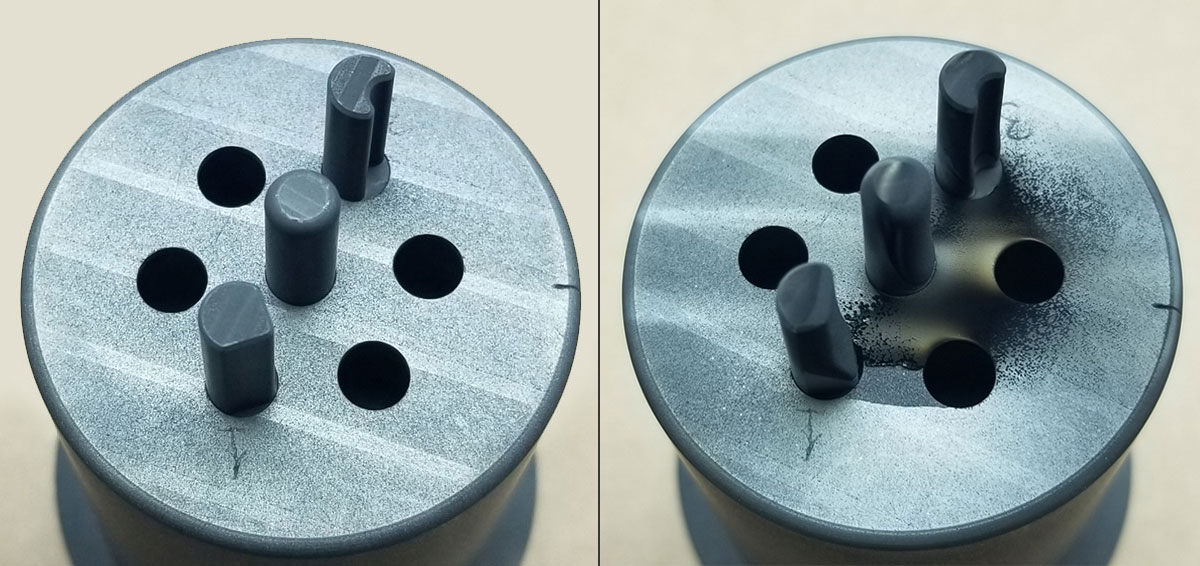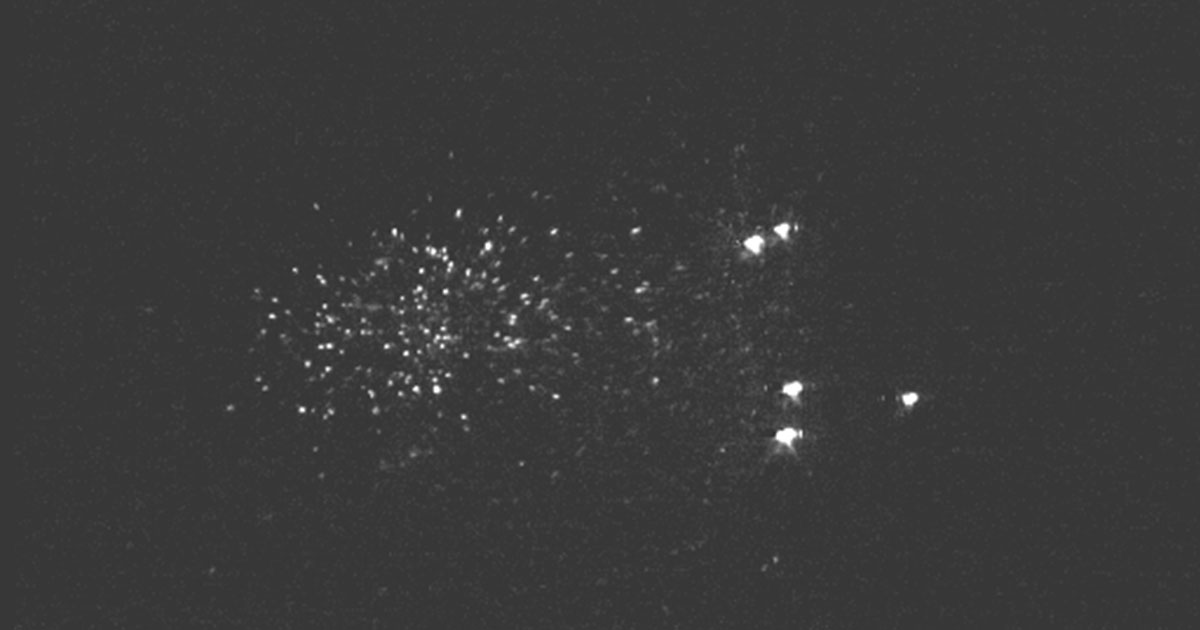
Researchers Study Spacecraft Heat Shields Using DIII-D Fusion Facility
Extreme conditions in DIII-D plasma allow simulations of atmospheric re-entry
San Diego, 18 August 2021 – Spacecraft have long used heat shields for protection during entry into planetary atmospheres. Future missions to the outer solar system will need more sophisticated materials than currently exist. However, extreme heat and particle velocity conditions experienced by these shields are very difficult to model on Earth. Scientists working at the DIII-D National Fusion Facility at General Atomics (GA) recently developed an innovative experiment that uses the conditions inside a fusion reactor for testing heat shield materials.
During high-speed atmospheric entries, such as those required in missions to the Solar System’s gas giants, the atmospheric gas surrounding the spacecraft turns into plasma and temperatures increase to more than 10,000˚F. To protect the scientific payload, the heat shield material burns (or ablates) in a controlled manner, which pulls the excess heat away from the core of the spacecraft.
Past heat shield testing approaches using lasers, plasma jets, and hypervelocity projectiles suffered from the problem that no single method could simulate the exact heating conditions present during a high-speed entry. Consequently, past models of heat shield behavior have sometimes over- or under-predicted heat shield erosion, with potentially disastrous results. The experiments at DIII-D demonstrated that the hot plasma created by a fusion reactor during operation offers a novel and potentially improved way of modeling heat shield behavior, especially for entries into Venus or the gas giants.
“Certain regions of DIII-D’s fusion plasma closely approximate the conditions created when heat shields impact planetary atmospheres at extreme velocities,” said Dr. Dmitri Orlov of the University of California San Diego, who led the multi-institutional team. “Our intent with these experiments was to leverage both these conditions and DIII-D’s rich suite of diagnostic instruments to develop a more accurate model of heat shield behavior.”
DIII-D is the largest magnetic fusion research facility in the U.S. and is operated by GA as a national user facility for the U.S. Department of Energy’s Office of Science. The heart of the facility is a tokamak that uses powerful electromagnets to produce a doughnut-shaped magnetic bottle for confining a fusion plasma. In DIII-D, plasma temperatures more than 10 times hotter than the Sun are routinely achieved.

Most experiments conducted at DIII-D are intended to explore the physics basis for fusion energy. An existing system at DIII-D, known as the Divertor Materials Evaluation System (DiMES), is designed to test materials for future reactors. DiMES can expose test samples to various plasma conditions as well as launch pellets of test material through the plasma. Dr. Orlov and Dr. Eva Kostadinova of Auburn University, working with a team of scientists, undergraduate, and graduate students, reconfigured DiMES to measure the ablation rates of carbon samples and refine predictive models for carbon-based heat shield behavior.
“The DIII-D tokamak features relatively long plasma discharges with well-controlled stable conditions at the edge, where the heat flux and the flow speed are similar to those experienced during atmospheric entries,” said Dr. Kostadinova. “This allowed us to simulate some of the most extreme conditions heat shields have experienced, such as the entry of the Galileo probe to Jupiter’s atmosphere, without the need to launch our test samples at high velocities.”
Because DIII-D is one of the most flexible and highly instrumented tokamaks in the world, the team was able to gather a range of valuable data on the behavior of the samples. By using scaling techniques, they extrapolated the results to larger projectiles and longer exposures, which allowed for comparison with experimental data from previous space flight missions and other on-ground testing facilities. The results offer considerable promise to develop the advanced heat shield materials necessary for planned missions to Venus and the Jovian moons.
“This project shows the great flexibility of DIII-D and the impressive range of experiments the facility can perform,” said DIII-D Director Richard Buttery. “Fusion plasma research at DIII-D continues to generate important spin-off science with applications well beyond fusion energy. It’s a bit ironic that our drive to create a ‘star on earth’ is also enabling exploration of the stars themselves.”
About General Atomics: Since the dawn of the atomic age, General Atomics innovations have advanced the state of the art across the full spectrum of science and technology – from nuclear energy and defense to medicine and high-performance computing. Behind a talented global team of scientists, engineers, and professionals, GA’s unique experience and capabilities continue to deliver safe, sustainable, economical, and innovative solutions to meet growing global demands.
About the DIII-D National Fusion Facility. DIII-D is the largest magnetic fusion research facility in the U.S. and has been the site of numerous pioneering contributions to the development of fusion energy science. DIII-D continues the drive toward practical fusion energy with critical research conducted in collaboration with more than 600 scientists representing over 100 institutions worldwide. For more information, visit www.ga.com/diii-d.
For more information contact:
Zabrina Johal, Senior Director of Strategic Development
858-455-4004
Zabrina.Johal@ga.com